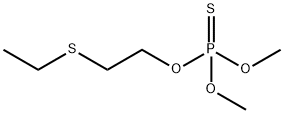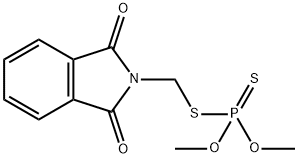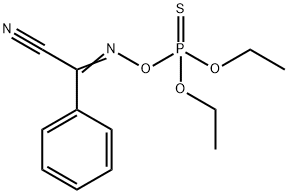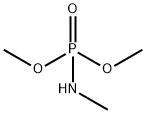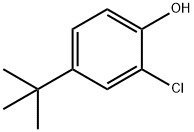CRUFOMATE
- CAS NO.:299-86-5
- Empirical Formula: C12H19ClNO3P
- Molecular Weight: 291.71
- MDL number: MFCD00055452
- EINECS: 206-083-1
- SAFETY DATA SHEET (SDS)
- Update Date: 2024-03-14 15:18:26
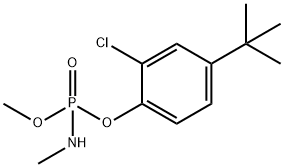
What is CRUFOMATE?
Description
Crufomate is a white crystalline solid; thecommercial product is a yellow oil. Molecularweight=291.71; Boiling point=(decomposes); Freezing/Melting point=(decomposes) 63℃. Insoluble in water.
Chemical properties
Crufomate is a white crystalline solid; the commercial product is a yellow oil.
The Uses of CRUFOMATE
Crufomate is an organophosphate pesticide. Crufomate is an anthelmintic that functions as a potent inhibitor of an acetylcholinesterase in the anterior end of the worms. Crufomate is also used to combat bovine hypodermatosis.
The Uses of CRUFOMATE
Systemic insecticide and anthelmintic.
Definition
ChEBI: Crufomate is an alkylbenzene.
General Description
White crystalline solid Mp: 61.5°C. The commercial product is a yellow oil. A phosphoramidate insecticide.
Reactivity Profile
CRUFOMATE is combustible; liquid formulations containing organic solvents may be flammable. Incompatible with strongly basic and strongly acidic materials. Unstable over long periods in aqueous preparations or above140°F. Emits toxic fumes of POx, Cl2 and NOx when heated to decomposition (Hazardous Chemicals Desk Reference p. 272 (1987)).
Hazard
Cholinesterase inhibitor. Questionable carcinogen.
Agricultural Uses
Insecticide, Anthelmintic (for cattle): All residue limits for crufomate, as listed in 40 CFR 180.295, were revoked by the U.S. EPA on June 9, 1993. All registered uses of crufomate in or on fat, meat, and meat byproducts of cattle, goats, and sheep were canceled It is applied as a spray on plants to kill insects, grubs, and worms on cattle. Not listed for use in EU countries
Trade name
DOWCO® 132[C]; MONTREL®[C]; RUELENE®[C]; DRENCH®[C]; RULENE®[C]
Potential Exposure
A potential danger to those involved in the manufacture, formulation, and application of this insecticide and anthelmintic for cattle.
First aid
If this chemical gets into the eyes, remove anycontact lenses at once and irrigate immediately for at least15 min, occasionally lifting upper and lower lids. Seek medical attention immediately. If this chemical contacts theskin, remove contaminated clothing and wash immediatelywith soap and water. Speed in removing material from skinis of extreme importance. Shampoo hair promptly if contaminated. Seek medical attention immediately. If thischemical has been inhaled, remove from exposure, beginrescue breathing (using universal precautions, includingresuscitation mask) if breathing has stopped and CPR ifheart action has stopped. Transfer promptly to a medicalfacility. When this chemical has been swallowed, get medical attention. Give large quantities of water and inducevomiting. Do not make an unconscious person vomit.Medical observation is recommended for 24-36 h.
storage
Color Code—Blue: Health Hazard/Poison: Storein a secure poison location. Prior to working with thischemical you should be trained on its proper handling andstorage. Store in tightly closed containers in a cool wellventilated area away from heat. Also, avoid contact withoxidizers (such as peroxides, permanganates, chlorates, perchlorates, and nitrates).
Shipping
UN2783 Organophosphorus pesticides, solid, toxic, Hazard Class: 6.1; Labels: 6.1-Poisonous materials. UN3018 Organophosphorus pesticides, liquid, toxic, Hazard Class: 6.1; Labels: 6.1-Poisonous materials.
Incompatibilities
Contact with oxidizers may cause the release of phosphorous oxides. Contact with strong reducing agents, such as hydrides, may cause the formation of flammable and toxic phosphine gas. Decomposes on heating, forming corrosive and toxic fumes of hydrogen chloride and nitrogen and phosphorous oxides. Incompatible with strongly alkaline and strongly acidic media. Unstable over long periods in aqueous preparations or above 60°C.
Waste Disposal
Crufomate decomposes above pH 7.0 in alkaline media. In accordance with 40CFR165, follow recommendations for the disposal of pesticides and pesticide containers. Must be disposed properly by following package label directions or by contacting your local or federal environmental control agency, or by contacting your regional EPA office
Properties of CRUFOMATE
| Melting point: | 60℃ |
| Boiling point: | bp0.01 117-118° |
| Density | 1.176 |
| refractive index | nD20 1.5142 |
| pka | 0.05±0.70(Predicted) |
| form | solid |
| Water Solubility | 4.975g/L(temperature not stated) |
| EPA Substance Registry System | Crufomate (299-86-5) |
Safety information for CRUFOMATE
Computed Descriptors for CRUFOMATE
New Products
4-AMINO-TETRAHYDRO-PYRAN-4-CARBOXYLIC ACID HCL 4-(Dimethylamino)tetrahydro-2H-pyran-4-carbonitrile 4-Aminotetrahydropyran-4-carbonitrile Hydrochloride (R)-3-Aminobutanenitrile Hydrochloride 3-((Dimethylamino)methyl)-5-methylhexan-2-one oxalate 1,4-Dioxa-8-azaspiro[4.5]decane 5-Bromo-2-nitropyridine Nimesulide BP Aceclofenac IP/BP/EP Diclofenac Sodium IP/BP/EP/USP Mefenamic Acid IP/BP/EP/USP Ornidazole IP Diclofenac Potassium THOMAIND PAPER PH 2.0 TO 4.5 1 BOX BUFFER CAPSULE PH 9.2 - 10 CAP SODIUM CHLORIDE 0.1N CVS ALLOXAN MONOHYDRATE 98% PLATINUM 0.5% ON 3 MM ALUMINA PELLETS (TYPE 73) LITHIUM AAS SOLUTION 2-Bromo-1-(bromomethyl)-3-chloro-5-nitrobenzene 2-Bromo-3-nitroaniline N-(3-Hydroxypropyl)-N-methylacetamide 3-Bromo-6-chloropyridazine 4-ethyl-3-nitrobenzoic acidRelated products of tetrahydrofuran
You may like
-
 1-Methyl-6-oxo-1,6-dihydropyridazine-3-carbonitrile 98%View Details
1-Methyl-6-oxo-1,6-dihydropyridazine-3-carbonitrile 98%View Details
99903-60-3 -
 88491-46-7 98%View Details
88491-46-7 98%View Details
88491-46-7 -
 1823368-42-8 98%View Details
1823368-42-8 98%View Details
1823368-42-8 -
 2-(3-(tert-butyl)phenoxy)-2-methylpropanoic acid 1307449-08-6 98%View Details
2-(3-(tert-butyl)phenoxy)-2-methylpropanoic acid 1307449-08-6 98%View Details
1307449-08-6 -
 Ethyl 3-(furan-2-yl)-3-hydroxypropanoate 25408-95-1 98%View Details
Ethyl 3-(furan-2-yl)-3-hydroxypropanoate 25408-95-1 98%View Details
25408-95-1 -
 2-Chloro-5-fluoro-1-methoxy-3-methylbenzene 98%View Details
2-Chloro-5-fluoro-1-methoxy-3-methylbenzene 98%View Details
1805639-70-6 -
 1784294-80-9 98%View Details
1784294-80-9 98%View Details
1784294-80-9 -
 Lithium ClavulanateView Details
Lithium ClavulanateView Details
61177-44-4
